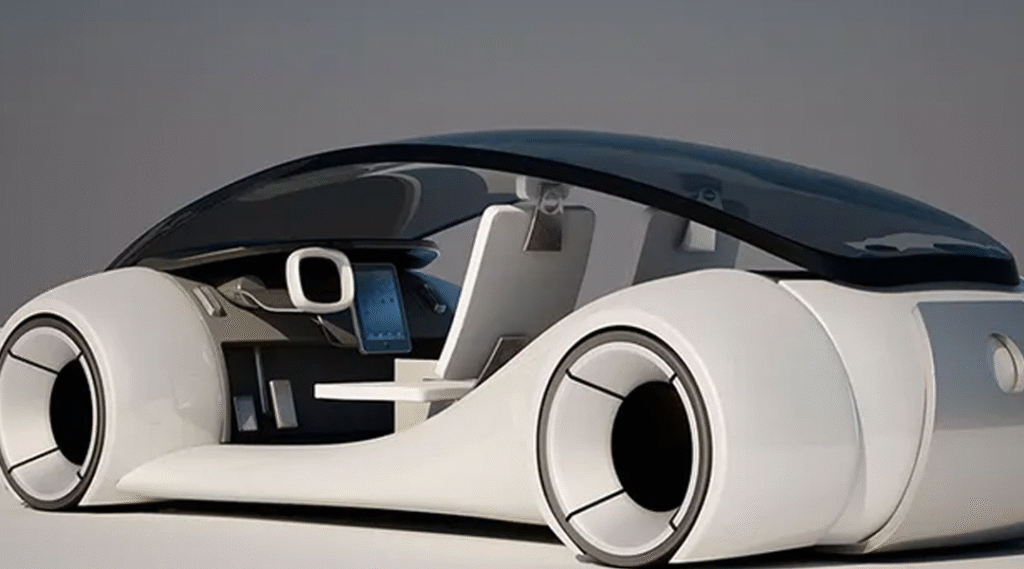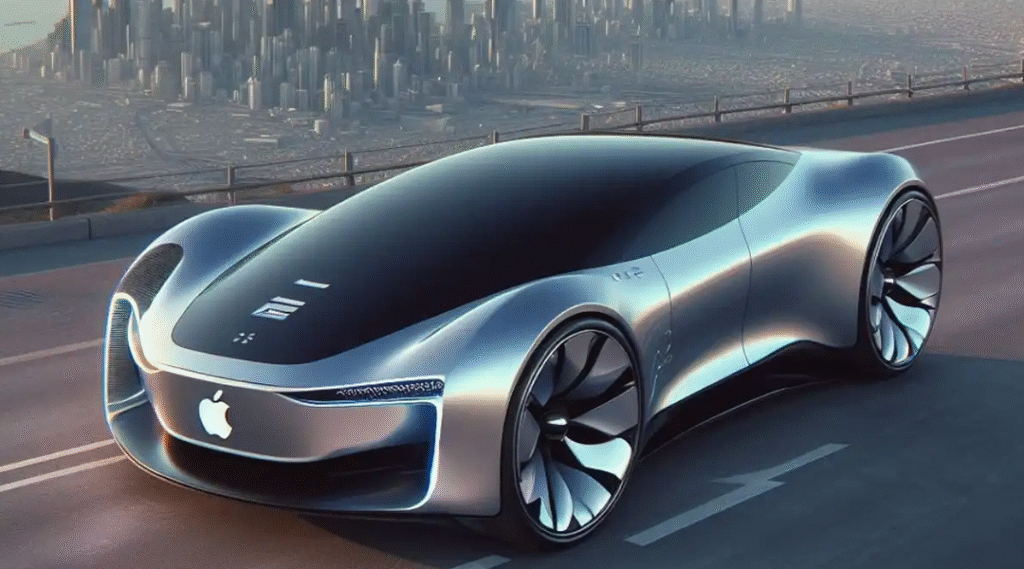Apple was one of the most and the greatest players to change the Auto world, we should not forget it. And please let’s image it.
Picture a world where Apple pressed forward with Project Titan, overcame manufacturing and regulatory hurdles, and shipped a polished Apple-branded EV. That single decision would have done more than add a luxury badge to the road — it would have altered supplier dynamics, competitive strategy across automakers and tech firms, and the balance between vehicle hardware and software. Below is a reworded, data-aware take on the likely outcomes if Apple had kept building the car.
Supply chains and investment would realign rapidly
Apple’s entry into mass auto production would have sent a shock through the supply chain. Known for insisting on high-quality, tightly integrated partners (and for financing retooling where needed), Apple would have pushed electronics, battery, and sensor suppliers to upgrade processes and software integration quickly. Firms that adapted could have won lucrative, premium contracts; those that didn’t risked losing out. Considering reporting that Apple spent roughly $1 billion per year on Project Titan at certain points, continued commitment would have channeled many billions more into components and contract manufacturing over multiple years.
Acceleration of premium EV hardware consolidation
An Apple vehicle—especially one built around efficient batteries, custom silicon and deep hardware–software integration—would have raised the bar for premium EVs. Legacy automakers would face pressure to either vertically integrate more of their stack (OS, software, chip design) or partner tightly with technology firms. The industry would likely split further: commodity volume players focused on price and scale, and premium makers competing on integrated hardware, superior UX, and differentiated services.
In-car software would become a major revenue axis
Apple’s core strength is platform-driven economics and recurring revenue. With a car in its lineup, Apple would probably monetize in-vehicle services aggressively — advanced navigation, subscription safety or driver assistance features, media bundles, and premium connectivity. That shift would change automakers’ mindset: they’d need to be not just vehicle manufacturers but platform operators vying for long-term customer spend. Companies with mature developer ecosystems would gain an edge as software differentiation became a primary battleground.
Autonomy development would speed up — and invite stricter oversight
Apple’s deep pockets and R&D muscle would have accelerated development of advanced driver-assistance systems and higher-level autonomy features. However, broader deployment of such systems would likely have provoked stronger regulatory scrutiny. Policymakers, already cautious about vehicle autonomy, would probably tighten testing and certification rules in response to larger-scale rollouts, meaning technology could advance faster while regulatory timelines and approvals slowed certain deployments.
Competitive counters from tech giants and OEMs
Apple staying in the market would have forced rivals to respond. Big tech (Google/Waymo, Amazon) and automakers would likely accelerate partnerships, acquisitions, and internal platform efforts to keep up. Expect more M&A and strategic alliances as automakers chase software partners or attempt to match Apple’s tight integration of silicon and sensors. The result: a far more intense and fast-moving competition between platform-owning tech companies and manufacturing-savvy carmakers.
Talent density and startup spinouts
Rather than dispersing talent through layoffs or internal reassignments, Apple’s continuation would have kept thousands working on vehicle software, battery engineering, and perception systems. That concentration typically seeds new startups and spinouts, so we’d likely see a wave of mobility-focused ventures spun out by ex-Apple staff and suppliers, accelerating innovation in vehicle components, software platforms, and services.

Consumer expectations and market segmentation would deepen
An Apple EV would have raised consumer expectations for design, software updates, and seamless device continuity — drivers might expect the same cadence of feature updates and ecosystem integrations they see on iPhones. This would enlarge the distinction between entry-level EV buyers (price and range focused) and premium buyers (ecosystem and UX focused), pushing automakers to more sharply segment their offerings.
Limits and realistic constraints
Even if Apple had succeeded, meaningful constraints would remain. Auto manufacturing is capital-heavy and lower-margin than consumer electronics; Apple would either accept different economics or charge a premium. Regulatory hurdles and the difficulty of safely scaling autonomous systems would still constrain timelines. And legacy automakers’ advantages — production scale, distribution, and service networks — would remain important for market reach and after-sales economics.
The auto industry today would likely look different
If Apple had persisted with the Apple Car, the auto industry today would likely look different: faster software-driven differentiation, supplier upgrades, heightened regulatory oversight for autonomy, and a sharper divide between commodity and premium EVs. Apple’s strength — owning the platform and controlling the user experience — would have intensified competition around monetizing in-car software and ecosystem lock-in. Although Apple chose to pivot away, the scenario underscores how profoundly one tech giant’s long-term commitment could ripple across manufacturers, regulators, suppliers, and consumers, reshaping an entire sector.
More articles for the Topic:
Wrist Wars: Who Will Triumph in the Smartwatch Arena—Apple, Samsung, or Huawei?
AR, AI, and VR Glasses: Who Will Be the Winner of the Next Computing Frontier
The Next Charge: How EV Battery Technologies Are Evolving for Range, Speed, and Sustainability
As for in-depth insight articles about AI tech, please visit our AI Tech Category here.
As for in-depth insight articles about Auto Tech, please visit our Auto Tech Category here.
As for in-depth insight articles about Smart IoT, please visit our Smart IoT Category here.
As for in-depth insight articles about Energy, please visit our Energy Category here.
If you want to save time for high-quality reading, please visit our Editors’ Pick here.



